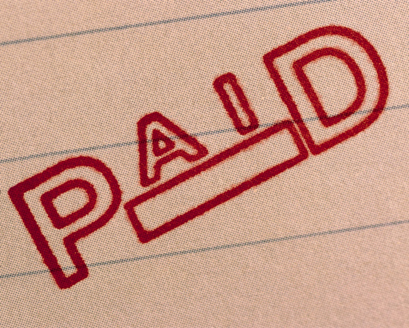 How and when to charge more money for your freelance, consulting or client work without risking lost business
How and when to charge more money for your freelance, consulting or client work without risking lost business
From hourly rates to project fees, deciding what to charge for your client work is often a difficult task for small businesses, freelancers or contract employees.
Often you start off at a set rate based on the expected scope of work or local market rates, but there may come a time when rates need to go up. Most independent workers can’t afford to lose business over raising their rates, but they also can’t afford to have no pay increase year after year.
Reasons to Raise Your Rates
Every business has a different situation based on their field of work, competitive landscape and local market conditions. But there are a variety of reasons why it may be time to start charging more.
Rising Costs – the cost of supplies and overhead expenses continues to go up each year. If you keep your rates the same you may be struggling to make a profit.
Change of Scope – your initial expectations of the work may have changed since you established a rate. If your fees do not cover the number of hours originally anticipated due to “scope creep” you may need to change rates.
Level of Complexity – despite the amount of time your work may take, the level of complexity or expertise required to do the work may vary for clients. If your work has become highly specialized for the client it may be time to demand higher rates.
Raising Rates with Valued Clients
Many people are afraid to raise rates because they don’t want to lose their best clients. They end up stuck at a lower rate for much longer than they should because they are so fearful of losing a valued client.
When it comes time to raising your rates or fees with valued clients, a tactful approach works best. Here are some ways to professionally communicate increases that are more likely to be accepted:
Offer slightly discounted new rates. If your new rate is 10% higher for new clients, offering existing valued clients a smaller increase of 5%. Let them know they are getting a better deal as a long-time or valued client.
Give advanced notice. Ample notice in writing that rates are going up is appreciated by clients – they won’t feel blindsided or unprepared for the additional expense. If the rates are too high then there is time for negotiation in terms of scope of work or the actual rate.
Offer market or cost justification. Be prepared to back up your new rates or fees with market cost comparisons or general cost increases (such as inflation, supplies or overhead costs).
Confirm work scope. Don’t let increased rates be an excuse for clients to expand the scope of work (unless you want it to). Make it clear what the expectations are for the hourly rate or fee – whether they are staying the same or changing.
Remember that rates are not a one-way street. The client may want to negotiate the actual rate, scope of work, number of hours, etc. If the relationship is good and the existing rate is low they may even express surprise that you did not increase rates earlier.
Be Prepared to Lose a Client Over Rates
When deciding how much to increase you need to ask yourself: Are you willing to lose the client if they can’t afford the new rates, don’t want to scale back work or simply won’t accept it? That’s the most important question.
Business is business, and sometimes it’s best to part ways with a client if they cannot accept your new rate.
Some businesses find that when they increase rates significantly their best customers who value their services will feel that it was overdue or at least justified. On the flipside, often the more troublesome customers will leave. This can be a big relief to small businesses and freelance workers because they can focus on giving better service to better customers – and make more money with less effort or stress.
In other words, if you raise rates by, say 10 percent, and lose 10 percent of your customers, you are actually getting a raise because you are making the same amount with less work, and can look for more high paying customers to fill the places of the low-paying ones that were lost.
If you have been dealing with a particularly abusive client – slow payments, scope creep, unreasonable or demanding – then you may actually choose to do a rate increase to compensate for the client’s behavior… without worrying too much about losing them. In this scenario, choose a rate where it would be financially worthwhile to deal with the hassle. And if the client is not agreeable, then it’s time to move on to better clients.



